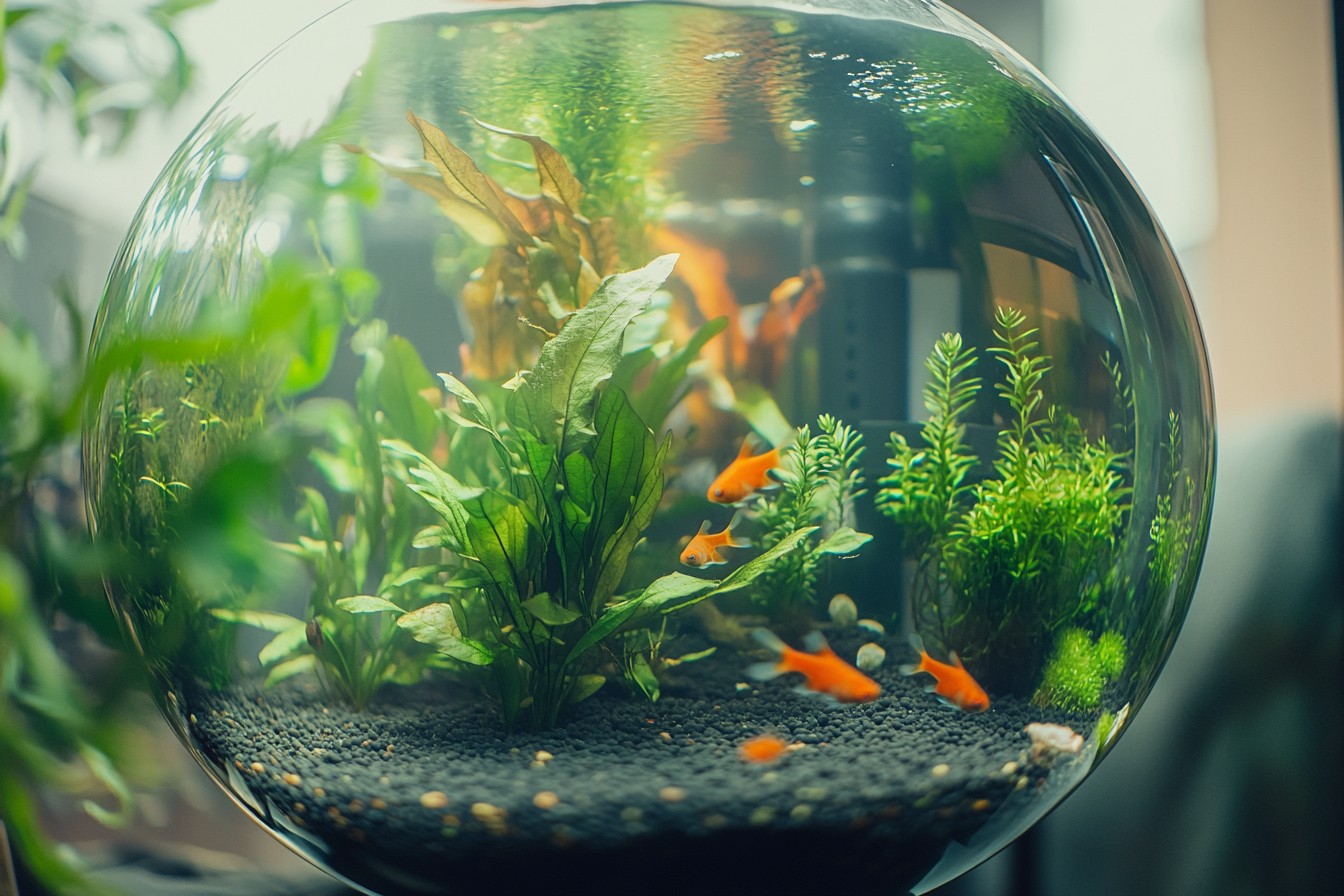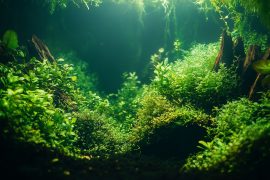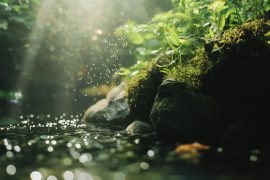I’ve spent years designing aquascapes that look perfect from exactly one angle – front and center, where the client stands to admire my work. It’s the industry standard, really. We create these underwater paintings meant to be viewed like a framed piece of art on the wall.
And that approach works beautifully… until someone walks to the side of the tank. Last year, a tech executive hired me to create a centerpiece aquascape for his open-concept living room.

The 150-gallon rimless tank sat on a custom pedestal in the middle of the space, visible from literally every angle. When I showed him my initial design sketches – all focused on the traditional front view – he looked at me like I’d completely missed the point. “But people will see it from everywhere,” he said, spinning his finger in a circle.
“What about the back? The sides?”
I remember standing there, portfolio in hand, experiencing one of those rare moments when you realize your entire approach to something needs to be reconsidered. Fifteen years of aquascaping experience, and I’d never truly designed for 360-degree viewing.
Talk about a professional blind spot. That project forced me to rethink everything I knew about aquascaping composition. Traditional techniques suddenly felt inadequate – the classic triangular layout, the golden ratio positioning, the forced perspective tricks…
none of them translated well to multi-angle viewing. I had to start from scratch. My first attempt was, frankly, awful.
I created what I thought was a balanced design with interesting focal points visible from each side. But when installed, it looked like four competing aquascapes jammed together – a disjointed mess without visual coherence. The client was polite but visibly disappointed.
I promised to rebuild it entirely, at my expense. Not my proudest professional moment. For the redesign, I spent three weeks experimenting with different approaches in my home studio.
I set up a test tank on a rotating stand so I could constantly check how shapes and compositions transformed as viewpoints shifted. That’s when I discovered something that should have been obvious: 360-degree aquascaping isn’t about creating four good views – it’s about creating a single, cohesive underwater environment that reveals different aspects of itself as you move around it. The breakthrough came from, of all places, a Japanese garden I visited while desperately seeking inspiration.
I watched how visitors experienced the space differently depending on the path they took, yet the garden maintained its identity regardless of perspective. The rocks didn’t try to look good from every angle – they simply existed as three-dimensional objects with interesting features that revealed themselves as you moved through the space. I applied this principle to the rebuild.
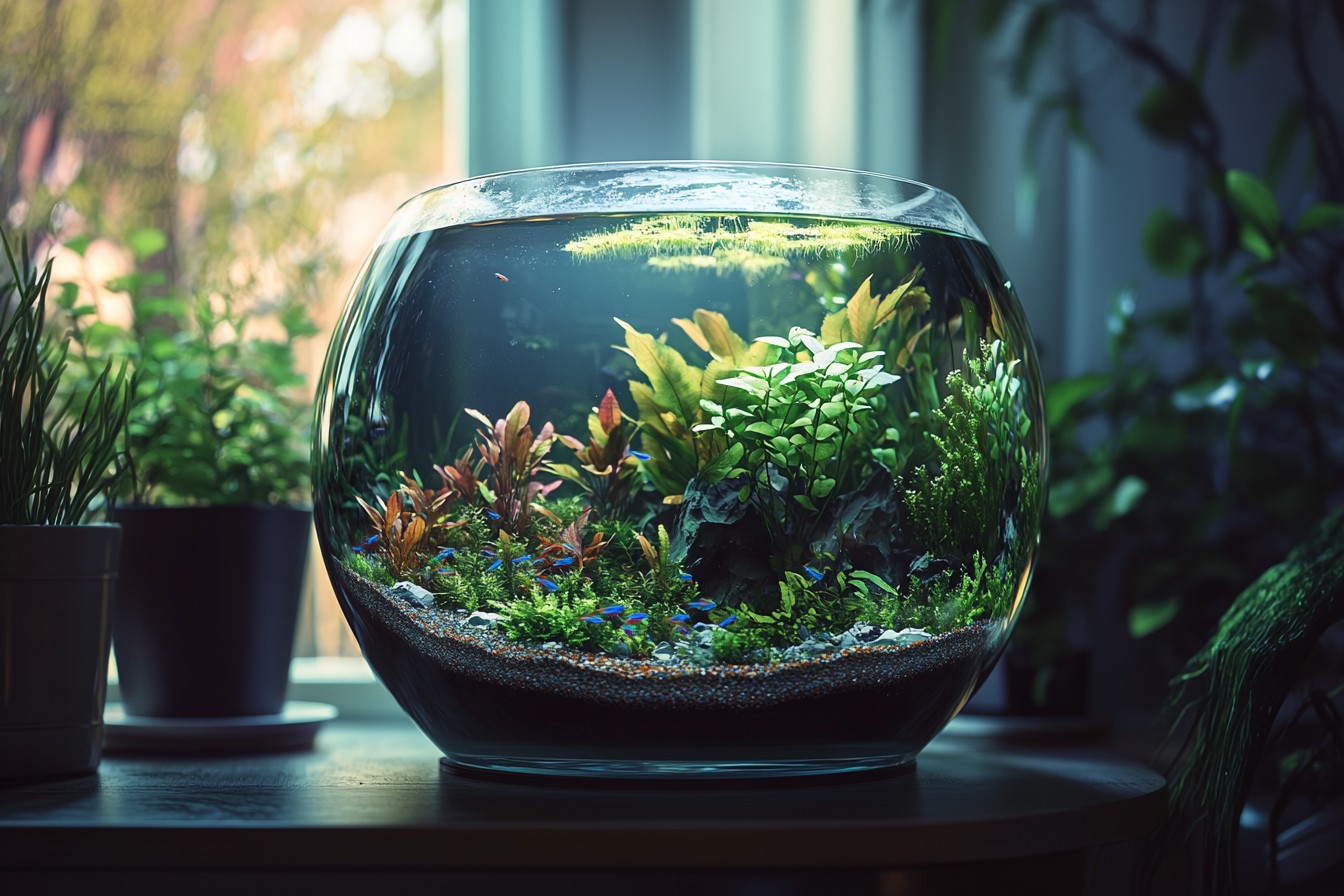
Instead of fighting against multi-angle viewing, I embraced it. The central hardscape became a weathered piece of ghostwood that twisted upward like a tornado, creating natural sight lines and visual interest from any position. Rather than trying to hide equipment behind rocks (which would be visible from some angle no matter what), I removed all in-tank equipment and installed an external sump system.
Plants were the trickiest part. In traditional aquascaping, we often use a dense background of stem plants with shorter species in front – a theater-style arrangement that falls apart when there’s no designated “front.” My solution was to create a graduated height arrangement radiating from the center, with taller plants clustered around the central wood and progressively shorter species toward the edges. Monte Carlo and dwarf hairgrass created a continuous carpet that looked intentional from any viewing angle.
When I reinstalled the redesigned tank, the difference was immediate. The client actually applauded – a first in my career. His exact words were: “It’s like having a different tank depending on where you stand, but they’re all somehow the same tank.” Exactly what I’d been trying to achieve.
Since that project, I’ve taken on more 360-degree aquascaping commissions than I can handle. They’re challenging, time-consuming, and frankly, more expensive for clients. But the results are undeniably special.
Here’s what I’ve learned about creating successful viewable-from-anywhere tanks:
First, forget everything you know about traditional aquascape layouts. The front-facing golden ratio doesn’t apply when there is no designated front. Instead, think in terms of radial balance – how weight and visual interest are distributed around a central axis.
Central hardscape positioning becomes crucial. Pieces need to be secured differently, too, since they can’t lean against the back glass (there is no “back”). I’ve started using stainless steel rods embedded in slate bases to secure driftwood in precisely the position and angle I want, invisible once the tank is filled and planted.
Plant selection requires more thought as well. Some species simply don’t work in 360 designs – those with a definite “good side” or that look scruffy from certain angles. I’ve found myself using a lot more epiphytic plants like various Bucephalandra species, Anubias petite, and mosses that can be attached to hardscape at different heights and angles.
The maintenance challenges are significant too. When every side is visible, there’s nowhere to hide filter intakes, heaters, or CO2 diffusers. External filtration becomes almost mandatory, with glass lily pipes positioned strategically at the tank corners where they’re least obtrusive.
I’ve become obsessive about clean glass – not just the front panel, but every square inch, requiring specialized long-handled tools for algae removal. Lighting presents another unique challenge. Traditional aquascapes are lit from above and front to back, but 360-degree tanks need even illumination from all directions.
I’ve experimented with multiple pendant lights suspended at different heights to eliminate harsh shadows that might look fine from one angle but jarring from another. The fish selection process changes too. Species that normally hide at the back of traditional tanks will find themselves uncomfortably exposed in a 360 setup.
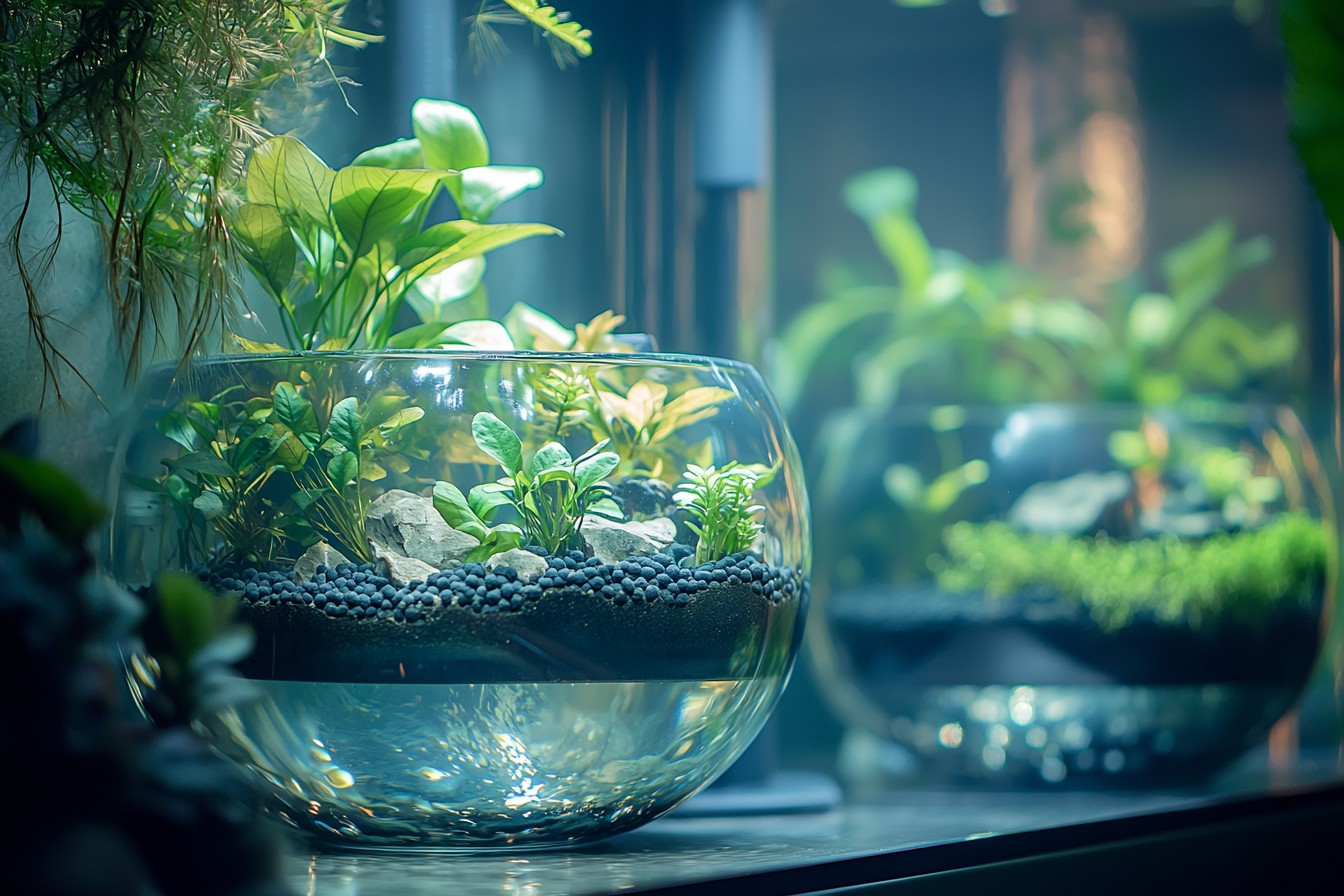
I’ve had success with schooling species that naturally occupy the middle water column – rummy-nose tetras, harlequin rasboras, and celestial pearl danios have worked beautifully. They create moving elements that look dynamic from any angle. One unexpected benefit of 360 designs: they actually seem to reduce aggressive territorial behavior in many fish species.
Without defined territorial boundaries like “back corners,” the fish adapt by establishing territories based on specific hardscape elements or plant groupings instead of regions of the tank. My cardinal tetras, normally shy and retreating, swim much more confidently in open water when the tank offers visual interest from all sides. The most valuable lesson I’ve learned from designing these tanks is that imperfection is not just acceptable – it’s essential.
Nature doesn’t look “perfect” from any single vantage point. It looks real. Creating that sense of underwater reality, rather than an idealized aquatic painting, means embracing some wildness in the composition.
My client base has shifted significantly since I started specializing in these designs. I work with more architects and interior designers now, people who understand spatial relationships and how environments function within larger spaces. The conversations are different – less about creating underwater landscapes and more about designing living sculptures that contribute to architectural flow.
The cost factor can’t be ignored. These tanks are typically 30-40% more expensive than traditional setups of comparable size. The custom filtration solutions, specialized lighting, and additional design time add up quickly.
Not to mention the maintenance – keeping all sides pristine requires more frequent attention. I’m upfront about this with potential clients. Some walk away, but those who commit understand they’re investing in something truly unique.
For hobbyists wanting to experiment with 360-degree aquascaping at home, start small. A 20-30 gallon cube is perfect for learning the principles without overwhelming yourself. Position it where you can easily walk around all sides, and spend time viewing it from different angles during the design process.
Take photos from each side to help you see compositional weaknesses that might not be obvious when you’re focused on the whole. The most rewarding part of this 360-degree journey has been watching how people interact with these tanks. Unlike traditional aquascapes, which are typically viewed head-on from a seated position, these tanks encourage movement.
Visitors naturally circle them, discovering new details with each step. They become more than decorative elements – they’re experiential pieces that change the way people interact with the spaces around them. I still create plenty of traditional aquascapes.
They have their place and their own kind of beauty. But there’s something special about designing a underwater world that refuses to be fully known from any single perspective – one that rewards curiosity and movement with constantly shifting vistas, just like the natural environments that inspire us in the first place.
